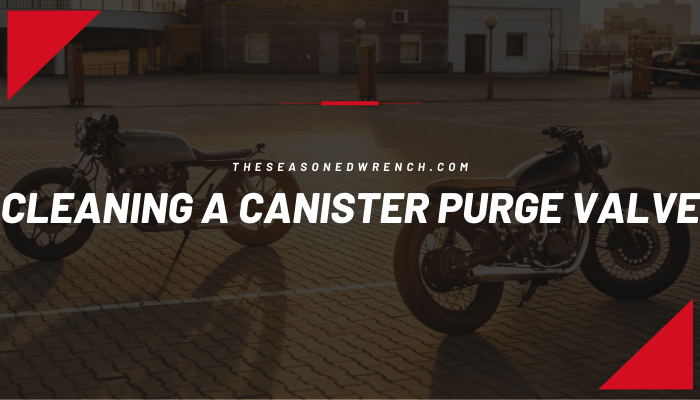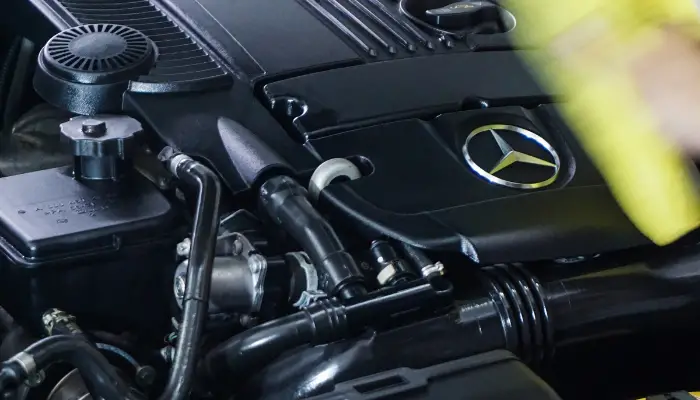Last Updated on July 5, 2023 by Chase Manhattan
The Evaporative Emission Control (EVAP) system plays a crucial role in controlling harmful emissions and maintaining fuel efficiency. A key component of this system is the charcoal canister purge valve, also known as the purge valve solenoid. In this comprehensive guide, we will cover the location of the purge valve, the symptoms of a faulty valve, its components, how to replace it yourself, the associated costs and what it does when working correctly. Let’s dive in!
- How to Clean Car Carpets Quick and Easy - July 10, 2024
- Can You Touch Up Clear Coat? Yes and No (Here’s Why) - November 25, 2023
- How To Wax A Car By Hand: A Comprehensive Guide - November 14, 2023
This information is sponsored by www.theseasonedwrench.com, edited, evaluated, and valited by myself.
Quick Navigation
Where Is The Evap Canister Purge Valve Located?
The canister purge valve solenoid is typically located in the engine bay, either attached to the engine or the intake manifold. In some vehicles, it may be situated near the fuel tank. In some cases the charcoal canister may be bypassed entirely. Its precise location can vary depending on different car models. Consult your service manual or use a search engine to find the EVAP system for your specific vehicle.

How Long Does It Take To Replace A Purge Valve?
The time required to replace a canister purge valve can vary, but it is generally a straightforward process that should take about 30 minutes to an hour. This time frame can be affected by the valve’s location, your level of experience, and the availability of proper tools.
How Much Does It Cost To Replace A Purge Valve
The replacement cost for a bad purge valve will vary depending on if you do it yourself or not. It’s advisable to test the purge valve to determine if it needs to be replaced, or if it will suffice to just clean it. Keep reading to see how much it costs to replace it yourself, and how much it can potentially cost to have it done profesionally.
Parts Cost For A Canister Purge Valve
While the cost of a new canister purge valve is typically in the range of $150, it can vary depending on your market, the make and model of your vehicle, and if you do it yourself or take the car to a shop.
Can I Replace A Purge Valve Myself?
Yes, most individuals with basic automotive knowledge and a few essential tools can replace a canister purge valve themselves. Before attempting the replacement, consult your vehicle’s service manual for detailed instructions specific to your make and model. Be sure to follow all safety precautions and guidelines outlined in the manual.
Pieces of Advice
When reinstalling the canister purge valve, be sure to reinstall all vacuum lines to the throttle body and all associated components. This is the most commonly skipped steps that will lead to further drivability issues if skipped. If in doubt, don’t fret about taking it to a local mechanic.
Labor Hours For A Shop Replacing A Purge Valve
Again, it will vary depending on your location, market, and the make/model of your vehicle but expect to pay $100-$200 in additional labor fees should you have your charcoal canister purge valve replaced at a reputable shop.

How Do You Unclog An EVAP Canister Purge Valve?
To unclog a canister purge valve, you’ll need to remove it from the engine. Once the valve is removed, you can use a brush or a spray cleaner to clean a purge valve solenoid. Be sure to dry it off completely before reinstalling it on the engine. This ensures that no dirt or debris is blocking the airflow.
Can You Drive With A Bad Purge Valve?
While driving with a bad purge valve is possible, it is not recommended. A malfunctioning purge valve can cause issues with the car’s emissions system (EVAP system) itself, leading to performance issues like poor engine performance, reduced fuel efficiency, and increased emissions. It is best to address the issue as soon as possible to avoid further damage and potential engine failure.

What Happens When A Purge Valve Fails?
When an evap purge valve fails or starts to malfunction from being stuck open or stuck closed, there can be several common symptoms stemming from the EVAP system. These issues may include:
- An illuminated check engine light
- Rough idling or misfiring
- Smell of gas vapors
- Difficulty starting
- Reduced fuel efficiency
Symptoms Of A Bad Purge Valve
Illuminated Check Engine Light
A faulty purge valve can trigger the check engine light on your dashboard. If the vehicle’s computer detects an unusually high or low purge flow from the valve, it will generate an error code and illuminate the check engine light. Friendly reminder, a check engine light code can usually be checked for free at your local auto parts store. Additionally, you will not pass an emissions test with an illuminated check engine light.
Rough Idling or Misfiring
A bad purge valve can cause a vacuum leak, resulting in rough idling or misfiring. The size of the leak will affect the severity of the issue.
Smell of Gas Vapors
A malfunctioning purge valve may allow fuel vapors to escape, causing a noticeable smell of gas vapors in or around the vehicle. Preliminary diagnostics involve checking to make sure the gas cap is tight and there’s not an exhaust leak under the vehicle.
[Related: Symptoms Of Bad Gas Caps]
Difficulty Starting
A failing purge valve can cause difficulty starting the vehicle. If the valve is stuck open, excess air will enter the engine, disrupting the air-fuel ratio and making it harder for the car’s engine to start.
Reduced Fuel Efficiency
A bad purge valve can cause reduced fuel efficiency. If the valve is not functioning properly, it may allow fuel vapors to escape instead of being burned by the engine, leading to increased fuel consumption.

Suggested Reads:
What Does A Purge Valve Do When Working Properly?
A canister purge valve that is working properly is responsible for controlling the flow of fuel vapors from the fuel tank to the engine. It traps these vapors, preventing them from escaping into the atmosphere. When enough pressure accumulates, the purge valve releases the vapors into the engine, where they are burned off, reducing emissions and improving fuel efficiency.
When Should You Replace A Purge Valve?
In most cases, a purge valve should generally be replaced every 50,000 miles or as recommended by your vehicle’s manufacturer. However, if your vehicle is driven in extreme conditions or you experience symptoms of a bad purge valve, it may need to be replaced sooner.
What’s The Difference Between A Purge Valve and A Solenoid?
Purge Valve Definition
A purge valve is a component of the vehicle’s emissions system that controls the flow of fuel vapors from the fuel tank to the engine. It helps maintain the balance of air and fuel in the combustion chamber and reduces harmful emissions of exhaust itself.
Technical Solenoid Definition
A solenoid is an electromechanical device that converts electrical energy into mechanical motion. In the context of a purge valve, the solenoid is responsible for opening and closing the valve, allowing fuel vapors and gases to flow between the fuel tank and the engine.
In conclusion, the purge valve is an essential component of your vehicle’s emissions system. Understanding its location, function, and replacement process can help you maintain your vehicle’s performance and fuel efficiency while minimizing harmful emissions. Stay vigilant for the symptoms of a bad purge valve and consult your service manual for specific guidance on locating and replacing the valve in your vehicle.


